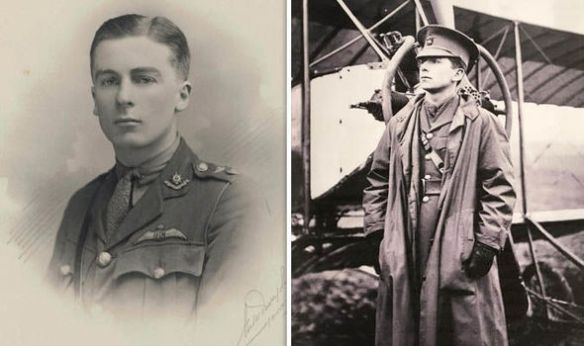Many legends have sprung up since the First World War. Among the most prevalent are those which say that the life expectation of a subaltern in a front-line infantry battalion or of a pilot in a frontline fighter squadron was only three weeks. While it is true that both groups of men suffered severe losses, the ‘three-week life expectation’ is an exaggeration. The reader may be interested in actual figures from one average infantry battalion and from an R.F.C./R.A.F. squadron.
The history of an infantry brigade in the 17th (Northern) Division contains an appendix giving the names of every officer who served in three of the brigade’s four original battalions. The first battalion listed is the 10th West Yorks, an early New Army battalion which served with its division on the Western Front continuously from its arrival in France in August 1915 until the Armistice. The battalion took part in the Battle of the Somme in 1916, the Battles of Arras and Passchendaele (Third Ypres) in 1917, and the March Retreat and the Final Advance in 1918. There is no reason to believe that this was not a typical Western Front battalion during more than three years of fighting.
The officers’ details in the brigade history give the date of joining the battalion, the date of the final departure from the battalion and the reason for that departure. There is one unfortunate omission: temporary absences because of light wounds or for other reasons are not noted. To allow for this, all subalterns remaining with the battalion for more than two years have had twelve months deducted from their service to allow for such temporary absences, and those remaining between one and two years have had six months deducted. It is believed that these deductions err on the generous side.
It was found that 174 officers joined the battalion as lieutenants or second lieutenants. After the allowances for temporary absence had been made, it was found that the average subaltern spent not three weeks but 6.17 months of front-line service with the battalion before becoming a casualty or leaving for some other reason. Furthermore, only one in five of these subalterns was actually killed, and almost half left the battalion unhurt. The following table shows the circumstances in which their service with the battalion ended.
Killed 37 (21.3%)
Wounded 48 (27.6%)
Prisoners 6 (3.4%)
Other reasons 83 (47.7%)
The ‘wounded’ total does not include those slightly wounded subalterns who returned to the battalion. The ‘other reasons’ include transfer to other units – usually trench-mortar, machine-gun, tank or flying units – those officers returned to England for various reasons, and those still with the unit at the Armistice. The shortest stay was by Second Lieutenant H. Banks, who arrived at the battalion on 23 August 1918 and was killed four days later near Flers, on the old Somme battlefield, during the final advance of the British Expeditionary Force.
Although these figures debunk the ‘three-week subaltern’ legend, it should not be forgotten that the figure of 174 subalterns serving with the 10th West Yorks during its period of thirty-eight months service on the Western Front shows that the battalion had to replace its original complement of junior officers six times.
#
Details for length of service of pilots joining a front-line fighter squadron are also available. This is No. 56 Squadron, which served on the Western Front from April 1917 until the end of the war, except for a very short period when it was withdrawn to England at the height of the German Gotha bomber attacks on London. The squadron flew S.E.5a single-seat fighters and, again, there is no reason to believe that it was other than an average fighter squadron during that part of the war which saw the greater part of the war’s air fighting; this squadron did, however, miss the worst of the spring 1917 air battles, when the R.F.C.’s aircraft were so inferior to those of the Germans and when excessive British casualties were suffered.
A total of 109 pilots were included in the survey; a further small number, who were transferred to other squadrons almost as soon as they arrived or who were returned home, presumably as unsuitable for front-line flying duties, have been omitted. There were no temporary absences among the 109 pilots, and their average stay with the squadron worked out at ten weeks and five days. The reasons for departure were as follows.
Killed 45(41.3%)
Wounded 17(15.6%)
Prisoners 31(28.4%)
To home establishment 16(14.7%)
The shortest stay was by an American, Lieutenant J. N. Offut, who was killed two days after his arrival.
It can be seen from these figures that, although the ‘three-week pilot’ is a myth, life for a fighter pilot was considerably more hazardous than for the junior infantry officer.
It would be interesting to see figures for equivalent German units. It is probable that neither their infantry-officer nor their fighter-pilot casualty rate would have been so high as that of the British. German infantry officers were not exposed to danger as frequently as their British counterparts because German senior N.C.O.s carried out many of the duties that British subalterns performed. The German fighter pilots fought mostly within their own lines and the prevailing westerly wind prevented many a British pilot in a damaged aircraft from returning to safety.
